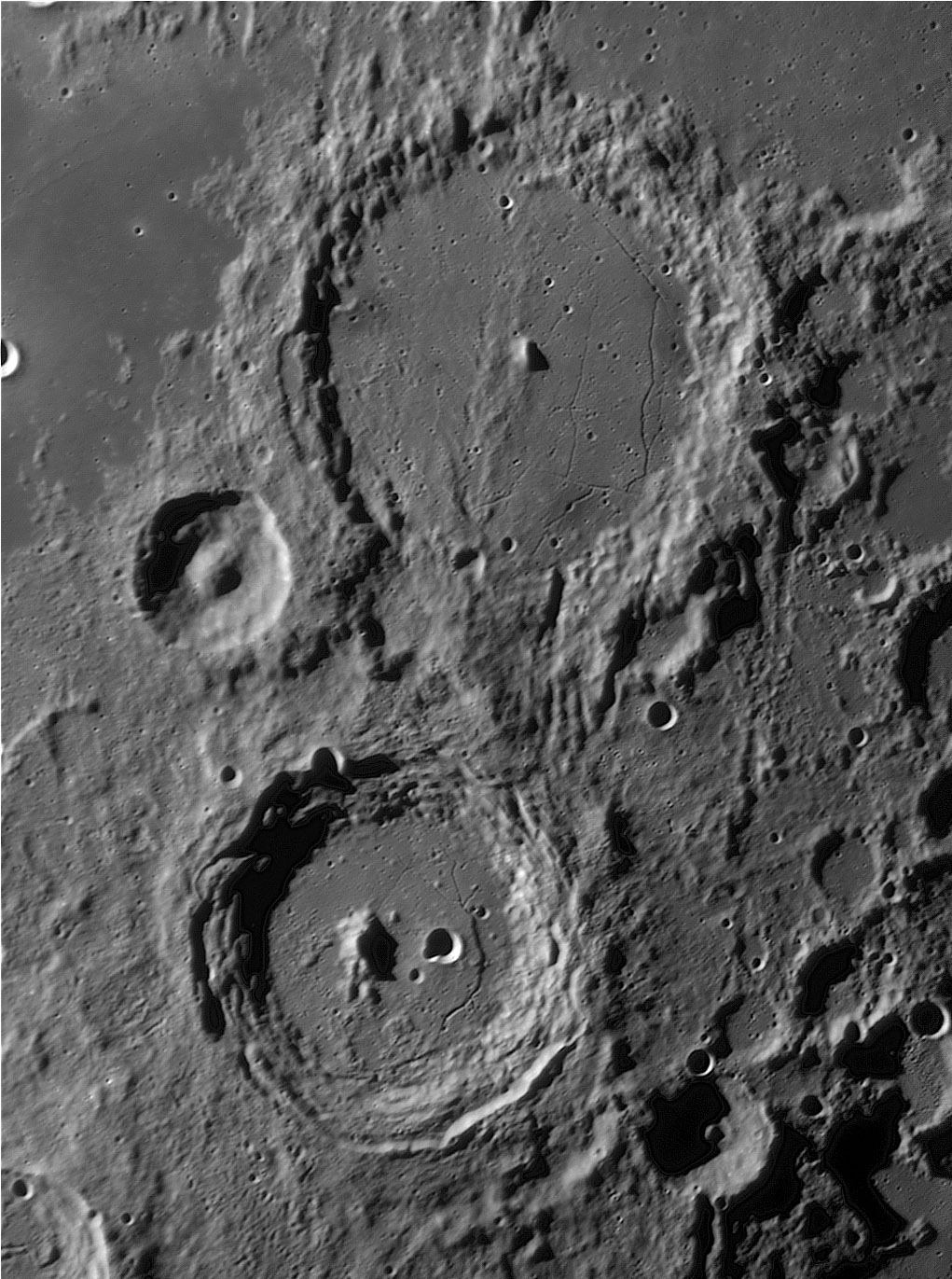
image by Wes Higgins, Tecumseh, Oklahoma
I am on travel and was not planning to write a new LPOD and then this evening I saw Wes’ new image and couldn’t help myself. Gosh, this is good! Comparison with the commonly used Lunar & Planetary Institution’s digitized Lunar Orbiter image of nearly the same area demonstrates that Wes’ image shows craters not visible of that orbital view and the rilles and other features are more sharply displayed - and there are no lines from the Orbiter’s photo-reconstruction process! Both Alphonsus and Arzachel are floor-fractured craters, and Alphonsus is the easiest place on the Moon to see volcanic dark halo craters. The Imbrium Basin impact-forming event created a number of radial crater chains that are well seen east of Alphonsus as well as the three gougely like short chains just north of Arzachel. This is a glorious image - look at each square centimeter and try to understand its history!
Technical Details:
September 14, 2006, 18″ Reflector, 4x Powermate, Infinity 2-1M camera, MAP processing.
Related Links:
Rükl plate 44
Wes’ website
Now you can support LPOD when you buy ANY book from Amazon thru LPOD!
COMMENTS?
Click on this icon File:PostIcon.jpg at the upper right to post a comment.



